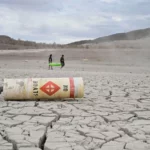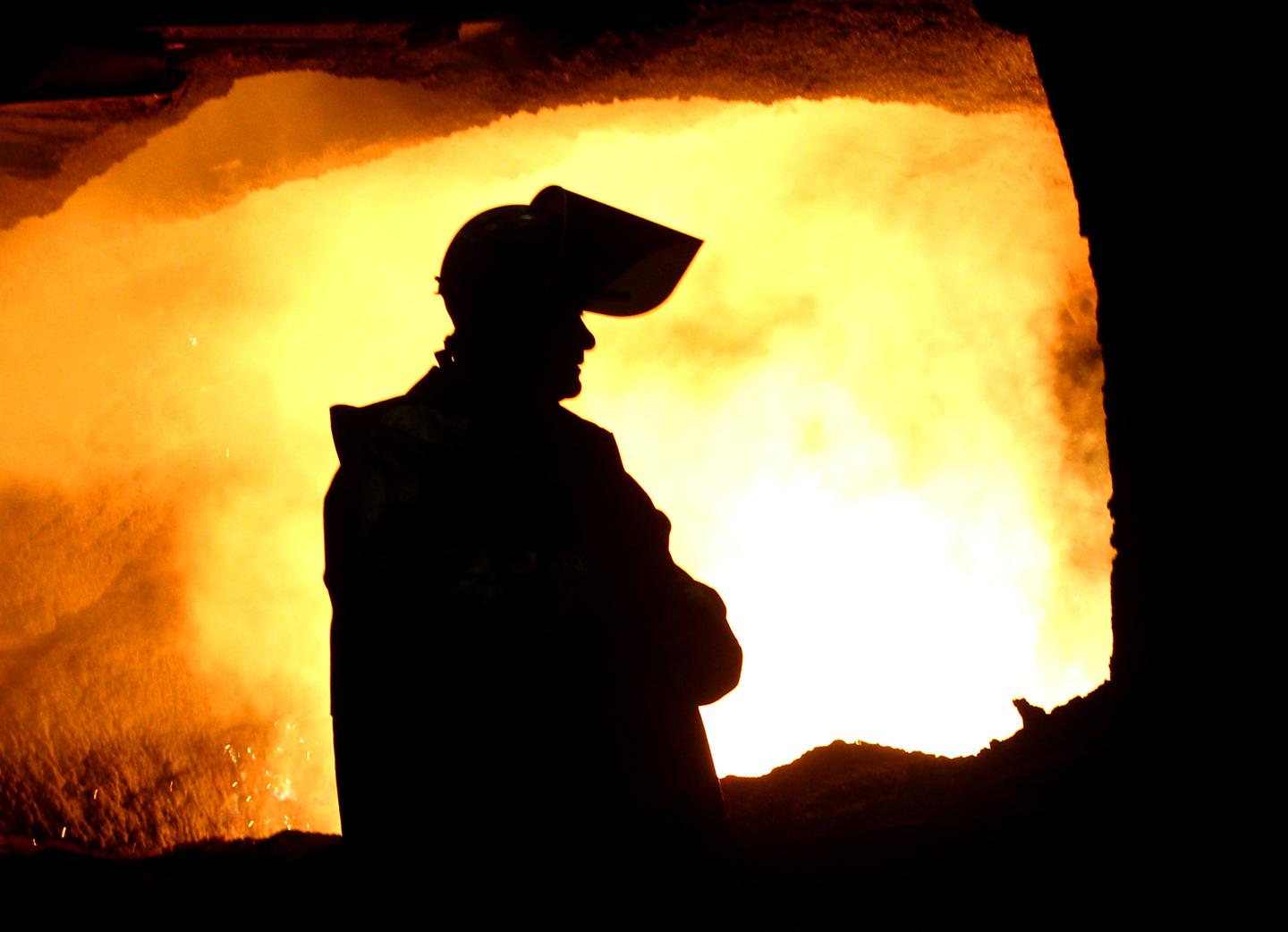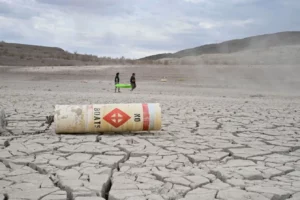On November 13, The Washington Post reported on the new plan of the Federal Railway Administration—a unit of the U.S. Department of Transportation—to remodel Union Station, the Amtrak rail and mass-transit hub serving Washington, D.C. The cost would be $10 billion, the Post said, and, oh, by the way, the projected finish date is 2040. As in, 18 years from now. And, of course, that target date could slip. “Much of the timetable is unclear,” the Post warned its readers. “The federal environmental review of the project, which began in 2015, is at least three years behind schedule.”
Now that is worth pausing over. Union Station was opened in 1907 (construction back then took just four years), which is to say, it’s been in the middle of a major city for 115 years. Over the course of all that time, whatever environmental issues the complex posed, or could pose, have been observed. So, this refurbishment plan ought to be a no-brainer. Yet instead, a review that began seven years ago is still going on and, in fact, according to the Post, is at least three years behind schedule.
We can note that rail and mass transit are near and dear to the Biden Administration. After all, as a U.S. Senator, Joe Biden commuted on Amtrak from Delaware to D.C. and back for 36 years. Describing himself as “Amtrak Joe,” he has shared perhaps blarney stories about his friendly exchanges with train conductors.
Moreover, rail and mass transit are central to liberal goals on climate change. That is, if Americans are going to be persuaded to give up their automobiles (which, for reasons of traffic and aesthetics, are deemed undesirable, even if they are electric), then they must have nice transit alternatives. In a 2019 video, Rep. Alexandria Ocasio-Cortes (D-NY) depicted herself riding happily on Amtrak as she touted the Green New Deal. And the 2020 Democratic platform declared, “We will launch our country’s second great railroad revolution by investing in high-speed rail and passenger and freight rail systems, and commit to public transportation as a public good.”
Yet even with all that enthusiasm for rail and mass transit, the Biden Administration still can’t see getting the Union Station project done in less than two decades. That is, it has been unwilling, even uninterested, in taking the sorts of legislative or executive measures that would be needed to fast-track this project—or any project.
Once upon a time, a Democratic president, Franklin D. Roosevelt, oversaw the building of the Pentagon—6.5 million square feet of office space—in just 16 months. He also oversaw the construction of two oil pipelines from Texas to the East Coast, each in about a year. And the construction of the Alaska Highway, connecting the Lower 48 to the future 49th State. Carved out of the rugged Pacific coast, that 1,382-mile artery was also built in a mere year.
To be sure, those feats of rapid construction were done during the emergency of World War Two. And yet today’s liberals routinely describe climate change as an emergency. Here, for instance, is President Biden in July 2022, “Climate change is literally an existential threat to our nation and to the world.” Okay, if the matter is that urgent, then one might expect . . . urgency. And yet just four months after Biden’s speech, his administration unveiled a relatively minor rehab project with that glaring 18-year timeline. (And it isn’t just this administration that’s lackadaisical; one could point to many other examples of such dawdling, at all levels of government, from coast to coast.)
For all their presumed enthusiasm about infrastructure, especially green infrastructure, the liberal establishment and associated officialdom seem to be in thrall to NIMBYs and Naderites. And one of the activists’ weapons of choice is the environmental impact statement (EIS), first mandated by Congress in 1970 and now a paper bonanza for lawyers and activists. The Heritage Foundation’s Diane Katz describes EIS as “an anachronism that unduly politicizes environmental protection and encourages judicial activism.” Katz notes that the Trump Administration took immediate steps to reform EIS. On his fourth day in office, President Trump issued Executive Order 13766, “Expediting Environmental Reviews and Approvals for High Priority Infrastructure Projects.” That order returned power to the states that never should have been taken away. Specifically, governors were empowered to identify “high priority” projects, which the federal government’s Council on Environmental Quality would have to evaluate within 30 days, with an eye toward speeding the overall federal review. To be sure, the whole process of getting things built involves many more players than just the governors and the executive branch, and yet the Trump Administration at least began to set a new tone of get-it-done. However, those efforts have been cut short; indeed, the Biden Administration has actually been moving the clock backward.
Of course, this deference to the status quo has come at a cost: things grind to a halt. In 2009, then-president Barack Obama persuaded Congress to pass his stimulus package, promising “shovel-ready” projects that would get Americans working while improving the Nation’s infrastructure. Yet the following year, surveying the failure of his near-trillion-dollar package to stimulate much more than paper-shuffling, Obama said with a sigh, “there’s no such thing as shovel-ready projects.”
So, we can see: There’s a price to be paid for frustration and failure. Indeed, the mismatch—between the declared urgency of the problem and the observable lameness of the solution, with the Union Station slowdown providing just one more example—has inspired some on the left to rethink their commitment to naysaying Naderite NIMBYism.
In May 2022, New York Times columnist Ezra Klein wrote, “We need to build more homes, trains, clean energy, research centers, disease surveillance. And we need to do it faster and cheaper.” And then he continued, “Do we have a government capable of building? The answer, too often, is no. What we have is a government that is extremely good at making building difficult.” Such sentiments have given rise to a new focus on state capacity, defined as the ability of a country to get things done. Especially big things.
American state capacity has dwindled in recent decades, in part because of the aforementioned greens and NIMBYs and also because the libertarian right has opposed anything that would be seen as increasing state power, no matter what the goal. In the past, the Cato Institute has teamed up with Ralph Nader and green groups to oppose the very sort of “big” things a growing country might need. Opposition to big government is a fine goal, but it’s simply naive to think that projects of national importance can get done without some sort of public participation if only to clear the way. In the absence of such clearance, as we have seen, big ideas get NIMBY-d to death.
The American System
In fact, private-public cooperation is the American Way. In 1791, our first treasury secretary, Alexander Hamilton, published his Report on Manufactures, which set the tone for America in its period of most rapid growth and its rise to the international pinnacle. Importantly, Hamilton began the Report with consideration of military and strategic strength and where it came from. Recalling that the 13 Colonies had nearly lost the American Revolution because of inadequate access to weapons, Hamilton asserted that the national goal must be to “render the United States independent on foreign nations for military and other essential supplies.” That is, we had to be able to manufacture the wares of war ourselves—that was the key to our continued independence and sovereignty.
Then Hamilton went further, explaining to a mostly agrarian country the economic value of industry: “It may be inferred that manufacturing establishments not only occasion a positive augmentation of the Produce and Revenue of the Society, but that they contribute essentially to rendering them greater than they could possibly be, without such establishments.”
Hamilton’s advice was not immediately followed; opponents derided Hamilton as, well, a statist—which was ironic because Hamilton, who had founded the Bank of New York, was an arch-capitalist. In fact, it took the War of 1812 to get most Americans to think that Hamilton was right. We couldn’t afford to be weak. (Americans might like to remember that war for U.S. victories in battles, but it was the British who torched Washington, D.C., while London was untouched.)
The consensus that then emerged came to be known as the American System: Governments were still small, and yet they would help encourage and support “internal improvements” (infrastructure); in the meantime, a protective tariff would nurture “infant industries.” The result was a harmony of interests, as business and government and laborers and farmers cooperated to get things done. It wasn’t always pretty, easy, or harmonic, and yet this system brought about the triumphs of the Erie Canal, the Transcontinental Railroad, and the Interstate Highways, to name just three of thousands of American wins.
During the high summer of this era, in 1925, President Calvin Coolidge declared, with no sense of irony and with little pushback, “The chief business of the American people is business.” Interestingly, in that same year, the phrase “can-do” first appeared.
Yet this Hamiltonian, American system of can-do has ground down in recent decades. One perceptive author dubbed the syndrome Demosclerosis. Today, nothing is shovel-ready, and so the Biden Administration is reduced to hoping that it will take “only” 18 years to spiff up a public building.
The New Can-Do
If we are ever to get out of this sclerotic rut, we will need a new commitment to Hamiltonian developmentalism. That is an overall national commitment to can-do. Laws at all levels of government will have to change, and so will political and cultural norms. Yes, such society-wide changes are daunting. Yet the historical record offers good news and bad news. The good news is that it can be done. The bad news is that it takes a crisis.
The initial crisis was the War of 1812. Hopefully, in our time, we can learn from a crisis rather than having to experience it ourselves. So the current energy debacle in Europe might help Americans coalesce around a New Can-Do. After all, it’s in the interest of politicians, in both parties, to see that Americans have the energy they need at costs they can afford this winter, next summer—and forever.
So, as we think about a New Can-Do, we can start with energy, which can be divided into three broad categories: fossil fuels, renewables, and nuclear. For the moment, we needn’t pick a favorite, even as we observe that all three, at one time or another, have been the beneficiary of a Hamiltonian framework. It’s a simple fact that none of it—not oil or gas pipelines, not solar farms, not nuclear reactors—got built without a legal and political framework. Somebody had to provide the police, the courts, and, yes, the incentives to make a go of these energy sources.
To be sure, the protective framework can be reversed, as the greens have worked to do, aiming to kill off both nuclear and fossil. And yet that attempted killing is self-limiting. Why? Because people need energy, and they will demand to keep it. That’s why, for instance, the “green” Europeans are now burning more coal.
Most likely, we are going to proceed on all three tracks at once: with fossil fuel (its carbon emissions likely mitigated by carbon capture), with renewables, and with safer nuclear. Anticipating anything other than this triad of sources is magical thinking.
So, this is where the New Can-Do comes in: If we need energy, let’s make sure we have it. If we need a clean environment, let’s make sure we have that, too. But we’ll only get there with a broad national consensus, achieved not on the basis of mush but rather on the basis of an articulated agenda and a directional mandate—a mandate for appropriate and necessary political action to achieve goals: a New Can-Do.
And if we have that Can-Do spirit, many good things for the country will come. Our Nation’s capital might get a nicer train station—a lot sooner than expected
Source : RealClearMarket











Add Comment